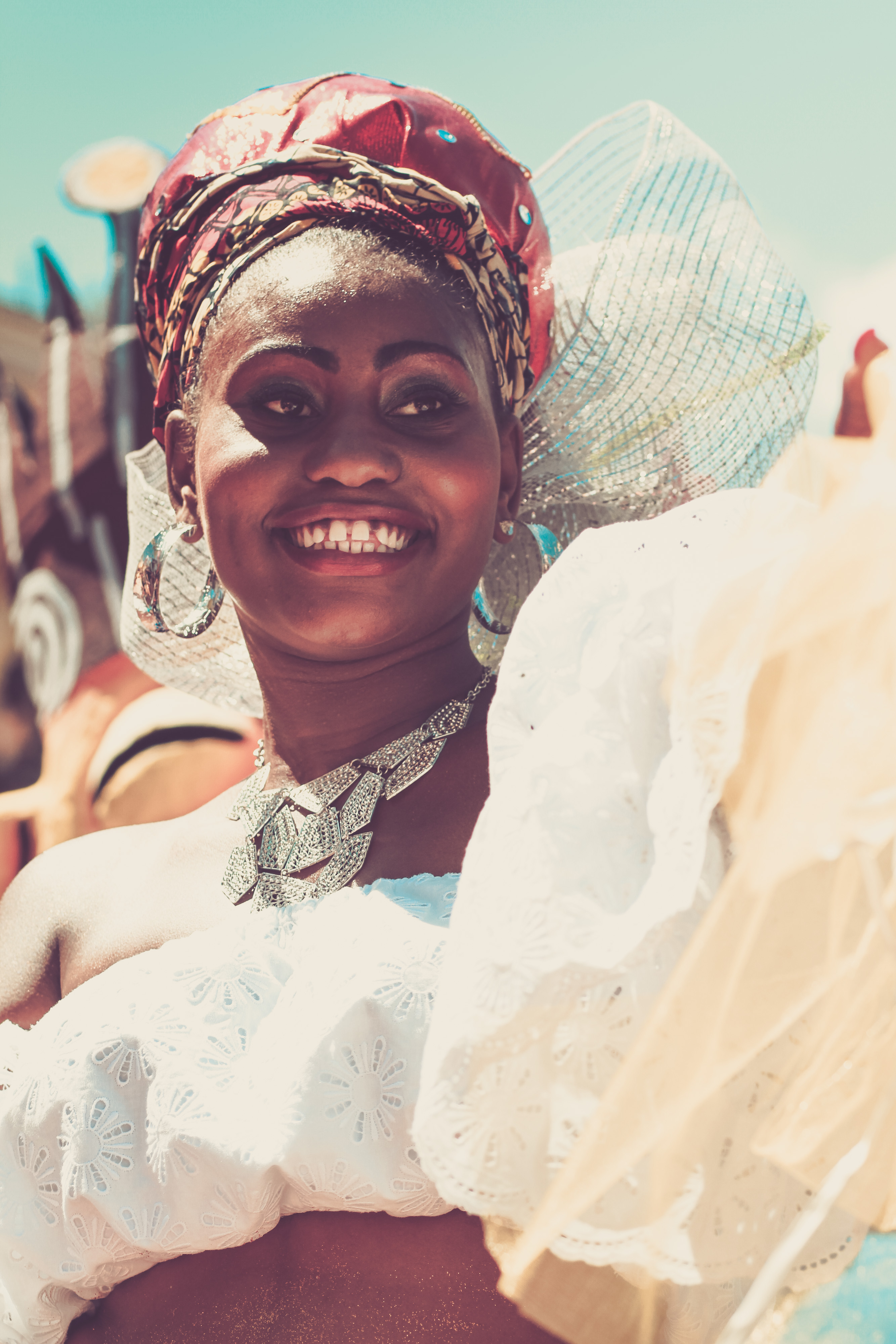|
Sud (department)
Sud ( French, ) or Sid (Haitian Creole; both meaning "South") is one of the ten departments of Haiti and located in southern Haiti. It has an area of and a population of 774,976. Its capital is Les Cayes. History Taino Period The department was part of the Xaragua kingdom. The area of Aquin was known as Yakimo a Taino settlement. The island of Vache was named Anigua. Spanish Period The area of Les Cayes was a Spanish settlement known as Salvatierra de la Sabana or Land Saved from the Water or Sea. French Period Much like the N-O, the South Department was a pirate hub with famous pirates such as Henri Morgan and many more hiding their loot on the multitude of islands from Grosse Cayes to Isle-à-Vache. Haitian Revolution The South, in general, was Rigaudin since was under the control of André Rigaud until it definitely switches the hand of Toussaint and the Louverturien. This conflict is known as the Haitian War of Knives opposing two political and economical groups in H ... [...More Info...] [...Related Items...] OR: [Wikipedia] [Google] [Baidu] |
Departments Of Haiti
In the administrative divisions of Haiti, the department (, ; ) is the first of four levels of government. Haiti is divided administratively into ten departments, which are further subdivided into 42 arrondissements, 145 communes, and 571 communal sections. In 2014, there was a proposal by the Chamber of Deputies to increase the number of departments from 10 to 14 —perhaps as high as 16. Administration Each departement has a departmental council (''conseil départemental'') compound of three members elected by the departmental assembly for a 4-year term. The departmental council is led by a president (''président''). The council is the executive organ of the department. Each department has a departmental assembly who assists the council in its work. The departmental assembly is the deliberative organ of the department. The members of the departmental assembly are also elected for 4 years. The departmental assembly is led by a president. History Three Departments ... [...More Info...] [...Related Items...] OR: [Wikipedia] [Google] [Baidu] |
Saint-Domingue Expedition
The Saint-Domingue expedition was a large French military invasion sent by Napoleon Bonaparte, then French Consulate, First Consul, under his brother-in-law Charles Leclerc (general, born 1772), Charles Victor Emmanuel Leclerc in an attempt to regain French control of the Caribbean colony of Saint-Domingue on the island of Hispaniola, and curtail the measures of independence and abolition of slaves taken by the former slave Toussaint Louverture. It departed in December 1801 and, after initial success, ended in a French defeat at the Battle of Vertières and the departure of French troops in December 1803. The defeat forever ended Napoleon's dreams of a French empire in the West. Context The French Revolution led to serious social upheavals on Saint-Domingue, of which the most important was the St. Domingue Slave Revolt, slave revolt that led to the Abolitionism in France, abolition of slavery in 1793 by the civil commissioners Léger-Félicité Sonthonax, Sonthonax and Étienn ... [...More Info...] [...Related Items...] OR: [Wikipedia] [Google] [Baidu] |
Windward Passage
Windward Passage (; ) is a strait in the Caribbean Sea, between the islands of Cuba and Hispaniola. The strait specifically lies between the easternmost region of Cuba and the northwest of Haiti. wide, the Windward Passage has a threshold depth of . With Navassa Island on its southern approach, it connects the Atlantic Ocean to the Caribbean Sea, and is in the direct path of shipping between the Panama Canal and the eastern seaboard of the United States. From either the eastern tip of the Guantánamo Province of Cuba, or the western tip of Haiti's Nord-Ouest Department, it is possible to see lights on the other side of the Windward Passage. Territorial dispute For decades, Cuba and Haiti had disputes over where the maritime boundary between the two nations was. In 1977, they settled by signing the Cuba–Haiti Maritime Boundary Agreement setting the official boundary. Geology The Septentrional-Oriente fault zone passes through the Windward Passage from the southern coast o ... [...More Info...] [...Related Items...] OR: [Wikipedia] [Google] [Baidu] |
Nippes
Nippes (French language, French, ) or Nip (Haitian Creole) is one of the ten Departments of Haiti, departments (the highest-level political subdivisions) of Haiti located in southern Haiti. It is the most recently created department, having been split from Grand'Anse (department), Grand'Anse in 2003. The capital of the department is Miragoâne, and it is the least populous department in Haiti. History Haitian Period Being created from Grand'Anse most of Nippes' history is similar to Grand'Anse's. Nippes during the Haitian Revolution played a big role with marron troops led by notablPlymoutha Jamaican Maroons, Jamaican later on was in Haiti. Independence Étienne Gérin from Miragwàn is a signatory of the Haitian Declaration of Independence. During the Haitian Civil war between Alexandre Pétion, Pétion and Henri Christophe, Henry 1st, André Rigaud came back to Haiti from France and was disappointed by Pétion's laissez-faire politics and created a de facto republic, the Me ... [...More Info...] [...Related Items...] OR: [Wikipedia] [Google] [Baidu] |
Grand'Anse (department)
Grand'Anse (, ), Grandans or Grantans (; both meaning "Big Cove") is one of the ten departments of Haiti. Its capital is Jérémie. History Taino Period Grand'Anse was part of the Xaragua kasika with settlements including Mamey, the modern-day town of Abricot. Abricot is still known today as "the Indian's Paradise." French Period It is said by the locals that the capital city of Jérémie is named after a French fisherman who established himself in the area because of its isolation from the rest of the country. Due to its rather mountainous geography, Grand'Anse did not support many plantations, and was therefore populated largely by white and mixed-race communities with some of the best schools in the colony. Some slaveowners sent their children to schools in Grand'Anse instead of sending them back to France for education. British Period The department was briefly under British control in 1793. Haitian Period Haitian Revolution While under the control of André Rigaud, mo ... [...More Info...] [...Related Items...] OR: [Wikipedia] [Google] [Baidu] |
Port-au-Prince
Port-au-Prince ( ; ; , ) is the Capital city, capital and List of cities in Haiti, most populous city of Haiti. The city's population was estimated at 1,200,000 in 2022 with the metropolitan area estimated at a population of 2,618,894. The metropolitan area is defined by the IHSI as including the Communes of Haiti, communes of Port-au-Prince, Delmas, Ouest, Delmas, Cité Soleil, Tabarre, Carrefour, Ouest, Carrefour, and Pétion-Ville. The city of Port-au-Prince is on the Gulf of Gonâve: the bay on which the city lies, which acts as a natural harbor, has sustained economic activity since the civilizations of the Taíno. It was first incorporated under Saint-Domingue, French colonial rule in 1749. The city's layout is similar to that of an amphitheater; commercial districts are near the water, while residential neighborhoods are located on the hills above. Its population is difficult to ascertain due to the rapid growth of slums in the hillsides above the city; however, recent ... [...More Info...] [...Related Items...] OR: [Wikipedia] [Google] [Baidu] |
Afro-Haitians
Afro-Haitians or Black Haitians (; ) are Haitians of the African diaspora. They form the largest racial group in Haiti and together with other Afro-Caribbean groups, the largest racial group in the region. The majority of Afro-Haitians are descendants of enslaved Africans brought to the island by Spanish Empire, Spanish Empire and French colonial empires, French Colonial Empire to work on plantations. Since the Haitian Revolution, Afro-Haitians have been the largest racial group in the country, accounting for 95% of the population in the early 21st century. The remaining 5% of the population is made up of mixed persons (mixed African and European descent) and other minor groups (European, Arab, and Asian descent). Haitian nationality History The Island of Ayiti was inhabited by the Arawak Peoples: Taino, Ciguayo and the Ciboney, Siboney. Italian explorer Christopher Columbus sighted the Island on 6 December 1492. He named it La Isla Española ("The Spanish Island"), late ... [...More Info...] [...Related Items...] OR: [Wikipedia] [Google] [Baidu] |
White Haitians
White Haitians (, ; Haitian Creole: ''blan ayisyen''), are Haitians of predominant or full European descent. There were approximately 20,000 whites around the Haitian Revolution, mainly French, in Saint-Domingue. They were divided into two main groups: The Planters and Petit Blancs. The first Europeans to settle in Haiti were the Spanish. The Spanish enslaved the indigenous Haitians to work on sugar plantations and in gold mines. European diseases such as measles and smallpox killed all but a few thousand of the indigenous Haitians. Many other indigenous Haitians died from overwork and harsh treatment in the mines from slavery. Most Europeans who settled in Haiti were killed or fled during the Haitian Revolution. History European conquest and colonization The presence of whites in Haiti dates back to the founding of La Navidad, the first European settlement in the Americas by Christopher Columbus in 1492. It was built from the timbers of his wrecked ship Santa María, during his ... [...More Info...] [...Related Items...] OR: [Wikipedia] [Google] [Baidu] |
Indo-Haitians
Indo-Haitians () or Indian-Haitans are Haitians of Indian ancestry who immigrated to or were born in Haiti. As of 2011, there were about 10,000 people of East Indian ancestry or ancestry from the Indian subcontinent living in Haiti, with the overwhelming majority of them being mixed with people of African and European ancestry. Their descendants are known as Marabous. Overview The Indian community in Haiti consists mainly of professionals, businessmen, and volunteers from the congregation of the Sisters of Charity. The community is made up of immigrants from India as well as other Caribbean islands such as Martinique and Guadeloupe. Indo-Caribbean immigrants from other Caribbean islands have intermarried with other Haitian communities. Their descendants are known as Marabous. There is also an influx of Haitian children born to Afro-Haitian mothers and Sri Lankan Tamil fathers. 2010 Haiti earthquake During the 2010 Haiti earthquake, many members of the Indian community have lost ... [...More Info...] [...Related Items...] OR: [Wikipedia] [Google] [Baidu] |
Arab Haitians
Levantine Haitians ( French: Levantine ''haïtiens''; Haitian Creole: ''Ayisyen levantin)'' are Haitians of full or partial Levantine ancestry, including Levant-born immigrants to Haiti. History The first Levantine immigrants to arrive in Haiti in the mid 19th century. During the time, Levantine business secnated by Italian immigrants. Many of Levantines migrated to the countryside where they peddled and were very informal economically speaking. World War I, which took place when Lebanon was part of the Germany-allied Ottoman Empire, triggered a Lebanese migration to the Americas, with Haiti receiving a large number of Lebanese immigrants. Haiti received a score of Palestinian refugees during the 1948 Nakba. The country was estimated to have about between 500,000 and 1 million residents of Levantine heritage. Social relations Levantine Haitians are commonly considered as part of the upper class within Haitian society, yet they maintain their own unique presence separate from ... [...More Info...] [...Related Items...] OR: [Wikipedia] [Google] [Baidu] |
Jean-Pierre Boyer
Jean-Pierre Boyer (; 15 February 1776 – 9 July 1850) was one of the leaders of the Haitian Revolution, and the president of Haiti from 1818 to 1843. He reunited the north and south of the country into the Republic of Haiti in 1820 and also annexed the newly independent Spanish Haiti (Santo Domingo), which brought all of Hispaniola under one Haitian government by 1822. Serving as president for just under 25 years, Boyer managed to rule for the longest period of time of any Haitian leader. Early life and education Boyer was born in Port-au-Prince and was the biracial son of a French tailor and an African mother, a former slave from the Congo. He was sent to France by his father for his education. During the French Revolution, he served as a battalion commander, and fought against Toussaint Louverture in the early years of the Haitian Revolution. He later allied himself with André Rigaud, also of mulatto ancestry, in the latter's abortive insurrection against Toussaint to try ... [...More Info...] [...Related Items...] OR: [Wikipedia] [Google] [Baidu] |
Charles Rivière-Hérard
Charles Rivière-Hérard (; 16 February 1789 – 31 August 1850) also known as Charles Hérard aîné (, ''Charles Hérard eldest'') was an officer in the Haitian Army under Alexandre Pétion during his struggles against Henri Christophe. He was declared the president of Haiti on 4 April 1843. He was forced from office by revolutionaries on 3 May 1844. Early life Charles Rivière-Hérard was born in Port-Salut on 16 February 1789. Little about his early life is generally known, except that he fought with the revolutionaries against the French, and that he was an officer commanding a battalion of black troops, probably later in his military career. Presidency Hérard was chief among the conspirators who ousted President Jean-Pierre Boyer during the 1843 Revolution. On 30 December of that same year, a Provisional Parliament of Haiti enacted a new Constitution, apparently without Hérard's approval. Soon afterward, General Hérard, who had the loyalty of the army, seized control ... [...More Info...] [...Related Items...] OR: [Wikipedia] [Google] [Baidu] |






